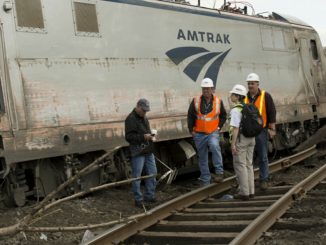If the country is going to build high-speed rail, its focus should be squarely on the densely populated Northeast Corridor (NEC), especially considering the highway and air congestion in the region, and the existing connections to other transportation modes, U.S. Rep. John Mica, R-Fla., contends.
The NEC is the only segment of rail primarily owned by Amtrak rather than the freight railroads. He stated that while the Administration has invested some in the NEC, it’s been in a piecemeal, half-baked fashion.
Transportation and Infrastructure Committee Members, the U.S. Government Accountability Office (GAO), and the Department of Transportation Inspector General highlighted lessons to be learned by mistakes in the Obama Administration’s program for high-speed passenger rail.
“I have been one of the strongest proponents in Congress of transportation and passenger rail, but in these days of trillion dollar deficits, we have a responsibility to ensure that the taxpayers’ money is wisely invested and that we move forward responsibly with any transportation improvements,” Mica said. “Just as you wouldn’t plan a four-lane highway where no one would drive on it, we don’t want to build high-speed rail where no one will ride it.
“Beginning with the $8 billion included in the stimulus, the President’s high-speed rail program has gotten off to troubling start,” Mica continued. “Unfortunately most of the high-speed rail funding has been spread around to projects that are not high-speed. To date, only seven percent of the more than $10 billion in high-speed rail federal funds has been spent, and the Administration continues to ask for more.
Mica continued, “The only current project that has a shot at truly providing high-speed service is in California, but there are many concerns with this shifting plan that begins in a rural stretch of the state and does not connect any major population centers.”
Serious criticisms of the California project were leveled by members of the Committee and witnesses. California Congressman and House Majority Whip Kevin McCarthy testified at the hearing, and California Committee Member and Chairman of the Economic Development, Public Buildings and Emergency Management Subcommittee Jeff Denham highlighted their continued concern about the lack of a realistic plan for the project.
“From skeptical independent analyses of the California high-speed rail business plan to the lack of committed private funds to ever-changing cost and rosy ridership projections, it is clear there are serious questions about this project’s viability and when, if ever, it will be completed,” McCarthy said. “While we face a fiscal cliff, I will continue fighting to oppose new federal subsidies for this project.”
“There are a lot of things we would like in California, and a new shiny train would be one of them,” Denham said. “It would be fun to have, but the question you have to ask yourself is ‘can we afford to have something fun, can we afford to have a luxury right now, and can we afford to do it with no viable plan and no private investment?’”
Susan Fleming, Director of Physical Infrastructure Issues for the U.S. Government Accountability Office (GAO), also provided testimony addressing problems with the High-Speed Intercity Passenger Rail Program (HSIPR) and the project overseen by the California High Speed Rail Authority.
“The California high-speed rail project faces many challenges,” said Fleming in her statement. “Chief among these is obtaining project funding beyond the first 130-mile construction segment. While the Authority has secured $11.5 billion from federal and state sources, it needs almost $57 billion more. Moreover, the HSIPR grant program has not received federal funding for the last 2 fiscal years, and future federal funding is uncertain. The Authority is also challenged to improve its ridership and revenue forecasts. Factors, such as limited data and information, make developing such forecasts difficult. Finally, the environmental review process and acquisition of necessary rights-of-way for construction could increase the risk of the project’s falling behind schedule and increasing costs.”
Mitchell Behm with the Department of Transportation Office of Inspector General, also discussed issues with the Federal Railroad Administration’s (FRA) overall management and progress of the rail program.
According to Behm’s written testimony, “Between April 2009 and February 2012, FRA issued 10 documents containing strategic and performance goals for assessing HSIPR program progress. However, some are inconsistent across these documents, and these inconsistencies cannot be reconciled.
“Moreover, the goals’ performance measures are not specific enough to determine overall program progress,” Behm stated. “Some goals that are critical to measuring progress are simply missing. Notably, FRA does not have a goal to determine the extent to which HSIPR is achieving its intended results.”



